The air around the Earth is called the ________ because _______ is the Science word for air.
Why doesn't it float into space?
Atmosphere, Atmo
Gravity pulls it back to Earth's surface
List the 5 weather factors.
Choose 1 and explain what it means.
Temperature, Precipitation, Humidity, Air Pressure, and Wind
Temperature - how hot or cold something is
Precipitation - water falling from the sky
Humidity - amount of water vapor in the air
Air Pressure - weight of air pushing down
Wind - moving air
When the sun shines on the ocean, the water will ____ and ____, because _____ can no longer pull it back to Earth's surface.
Spread Out
Rise
Gravity
Describe the meaning of each Air Mass term:
Continental
Maritime
Tropical
Polar
Continental - Dry
Maritime - Wet
Tropical - Hot
Polar - Cold
What is the difference between weather and climate?
Weather is Just today, but climate describes usually.
To find the location of a graph, we read the ______.
To find what each line means, we look at the _____.
Title
Key
If there were no humans, we would expect the climate to _________.
Change more slowly
Most people make _____ observations, which use _____, but Scientists make _____ observations, which use _____, because ________.
Quantitative, Numbers because it helps them make predictions
Which weather factor means "the amount of water vapor in the air?"
How does the water vapor get into the air?
Humidity
It evaporates
_____ is the step where water changes from a liquid to a gas.
We know because it includes the word ____, which means the gas state of water.
Evaporation
Vapor
Near Alaska, we would expect a ______ _______ Air Mass to form because __________.
Alaska is near the Poles and the Ocean
Where will there be a warmer climate:
- Close to the equator
- Far from the equator
Why?
Close to the equator, because it always gets direct sunlight
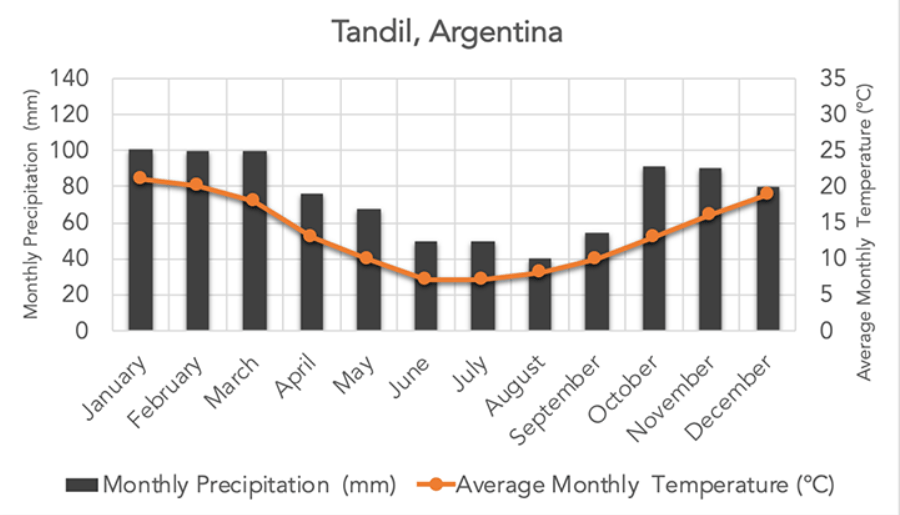
The black boxes tell us about _______, which we can measure using the ____ vertical axis.
The orange dots tell us about ________, which we can measure using the ____ vertical axis.
Precipitation, Left
Temperature, Right
Three examples of fossil fuels are _____, ______, and ______.
Coal
Natural Gas
We say the Weather is _______ because we can describe it with our senses.
Our senses are: ____, _____, _____, _____, and ____
Observable
See, Hear, Smell, Taste, and Touch
In the United States, we measure temperature using degrees _____.
Scientists, and most other people in the world, measure temperature using degrees _____.
The tool everyone uses to measure temperature is a _____.
Fahrenheit
Celsius
Thermometer
_____ happens when the water touches the cold ____ and packs together to form a ____.
Condensation
Atmosphere
Cloud
Near Florida, we would expect a ______ _______ Air Mass to form because ___________.
Maritime Tropical
Florida is near the Equator and the Ocean
Where will there be more precipitation:
- Close to the ocean
- Far from the ocean
Why?
Close to the ocean because the water can evaporate and form clouds
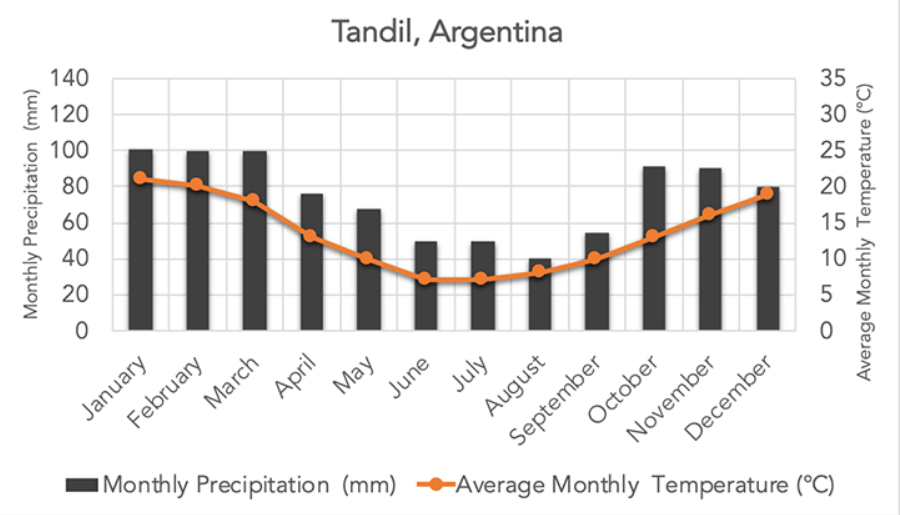
The temperature on this graph has a ______ trend from January to June, and a _______ trend from July to December.
Decreasing
Increasing
Natural causes, like ________, make the climate change ________.
Human causes, like ________, make the climate change ________.
Sunlight strength, tilting of Earth's axis, or volcanic eruptions - Gradually
Burning Fossil Fuels, Cutting Down Trees, Factories producing chemicals - Suddenly
We say the weather is _____ because it does not last forever. The opposite of this would be _______.
Give an example that shows this is true about the weather.
Temporary
Permanent
Today it is sunny, but tomorrow it may be rainy.
Rain is an example of _________.
We can measure it using a __________.
We would report our measurement using the units _____.
Precipitation
Rain Gauge
Inches of Rain or Millimiters of Rain
_____ happens when water is pulled back to Earth's surface by ______.
The 4 examples are: ____, ____, ____, and ____.
Precipitation
Gravity
Rain, Snow, Sleet, Hail
A place where two air masses meet is called a _____.
These are interesting to scientists because ______.
Front
Precipitation happens there.
Where will the weather be more constant:
- Close to the ocean
- Far from the ocean
Why?
Close to the Ocean because the water takes longer to heat up and cool down than the land
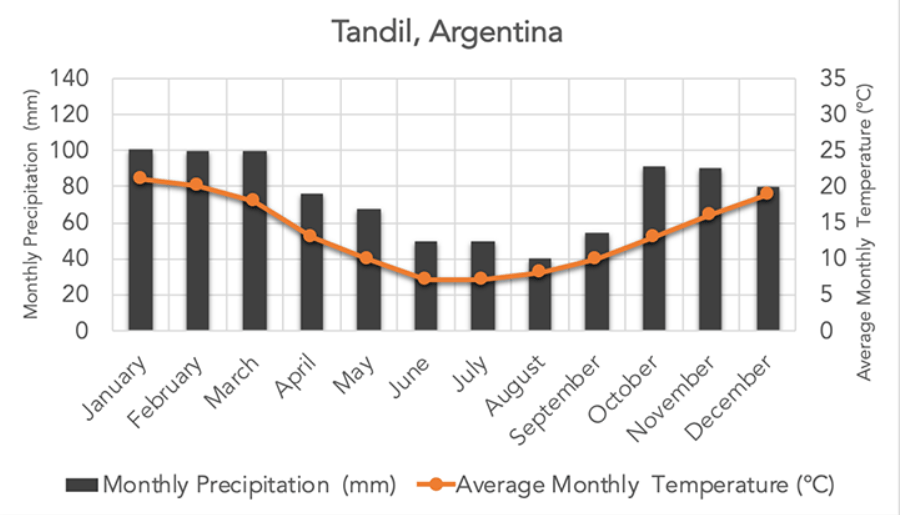
The maximum temperature is _______, which happens in _________.
The minimum temperature is _______, which happens in ________.
22 (20-25), January
8 (5-10), June (or July)
One effect of climate change is _________.
This is a problem because __________.
Floods - Destroy infrastructure, kill crops
Droughts - Kill crops and animals, people need water to drink
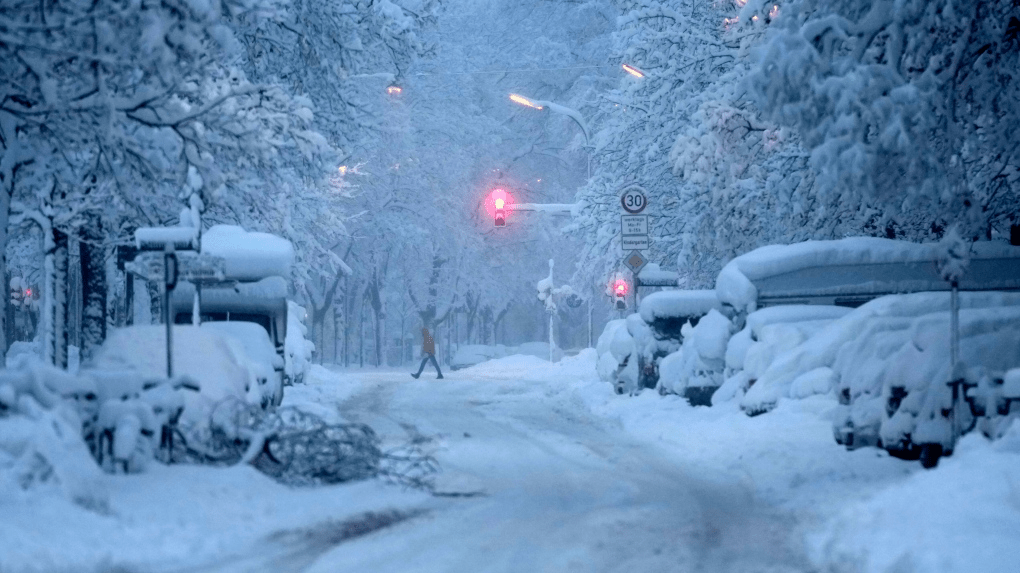 liDescribe this picture with:
liDescribe this picture with:
1 Qualitative Observation
1 Quantitative Observation
1 Inference
Qualitative - The snow is white. The ground is snowy. The light is red. The person is walking.
Quantitative: There is one person. There are 2 lights. There are 3-4 inches of snow.
Inference: A snow plow just drove through. It is wintertime. The temperature is below freezing.
We use an Anemometer to measure the _____, which is the movement of ____.
We would report our measurement using the units _____.
Wind
Air
Kilometers per Hour
Describe the three steps of the water cycle using their Scientific Names.
Evaporation - water changes into a gas and rises into the air
Condensation - water touches the cold atmosphere and packs together to form a cloud
Precipitation - dense water is pulled back to Earth's surface by gravity
A continental polar air mass will be ____ and ____.
A maritime tropical air mass will be ____ and ____.
When these two air masses meet, what will happen?
Cold and Dry
Warm and Wet
The tropical air mass will rise, the polar air mass will sink, and rain will fall.
Describe how the climate will be different at the top of a mountain compared to on flat land.
______ Precipitation because __________
_______ Temperatures because __________
More precipitation because the water vapor is forced up the mountain, making clouds
Colder temperatures because the air particles are more spread apart, so they can't trap the heat
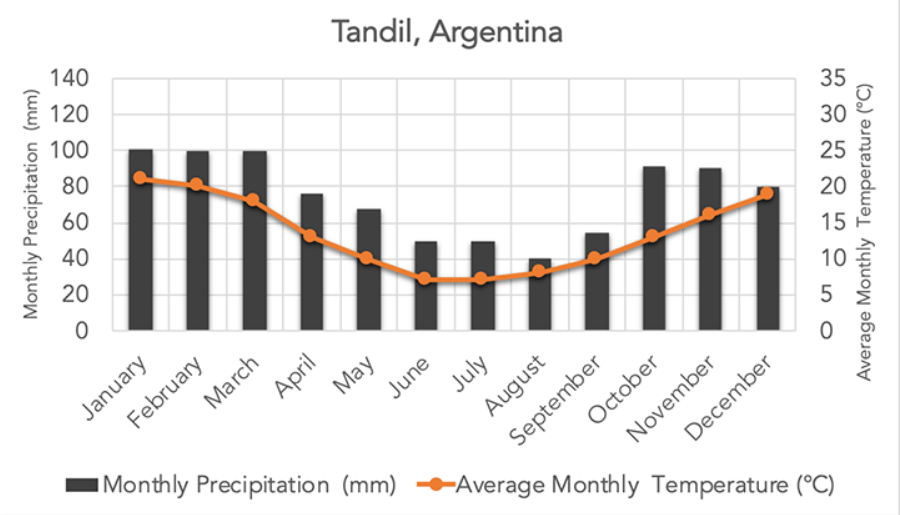
Is this graph similar or different from what we would expect in Boston?
Why?
Different
The maximum happens in January, and the minimum happens in June. Boston has the opposite pattern.
Argentina is on the opposite side of the Equator, so it gets direct sunlight when we get slanted sunlight.
Burning fossil fuels is helpful because ________.
Burning fossil fuels is harmful because _______.
Helpful - makes electricity, heat, powers cars and other forms of transportation
Harmful - creates gases that trap the sun's heat, causes climate change